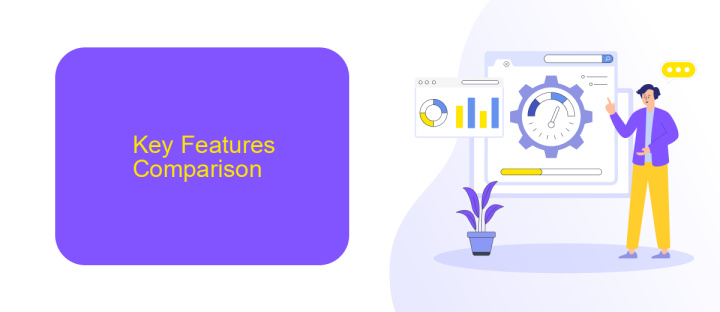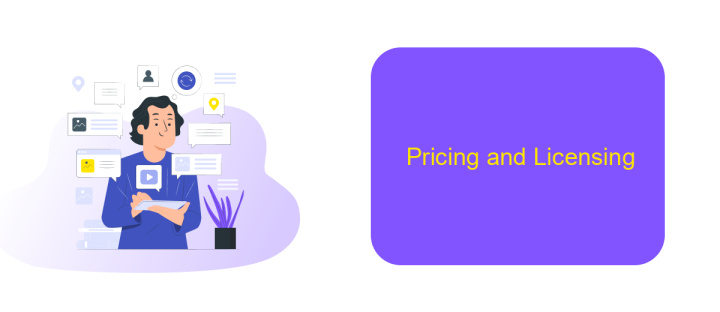Boomi Vs OIC
In today's rapidly evolving digital landscape, businesses are increasingly turning to integration platforms to streamline operations and enhance connectivity. Boomi and Oracle Integration Cloud (OIC) are two prominent contenders in this space. This article delves into a comparative analysis of Boomi vs. OIC, examining their features, strengths, and potential drawbacks to help you make an informed decision for your enterprise needs.
Introduction: Overview of Boomi and OIC
Boomi and Oracle Integration Cloud (OIC) are two leading platforms in the integration space, offering robust solutions for connecting various applications, data, and processes. Both platforms aim to streamline business operations by providing seamless integration capabilities, but they cater to different needs and preferences.
- Boomi: A cloud-based integration platform as a service (iPaaS) that focuses on ease of use, rapid deployment, and a wide range of pre-built connectors.
- OIC: A comprehensive integration solution from Oracle that provides extensive capabilities for application integration, process automation, and API management.
- ApiX-Drive: An additional service that simplifies the integration process by offering an intuitive interface and a variety of connectors, making it easier for businesses to connect their systems without extensive technical knowledge.
Choosing between Boomi and OIC depends on various factors such as the complexity of integration requirements, existing technology stack, and specific business needs. While Boomi is known for its user-friendly approach and quick setup, OIC offers deeper integration capabilities and is well-suited for enterprises already leveraging Oracle products. ApiX-Drive can complement both platforms by providing an easy-to-use interface for managing integrations.
Key Features Comparison

Boomi and Oracle Integration Cloud (OIC) both offer robust integration capabilities, but they cater to different needs. Boomi excels in ease of use with its low-code development environment, making it accessible for users with varying technical skills. It provides pre-built connectors for a wide range of applications, simplifying the integration process. Additionally, Boomi's real-time data processing ensures timely and accurate data flow across systems, enhancing operational efficiency.
On the other hand, OIC stands out with its comprehensive suite of integration tools, including process automation, application integration, and data integration. Its tight integration with Oracle's ecosystem makes it a preferred choice for businesses heavily invested in Oracle products. Furthermore, OIC's advanced analytics and monitoring capabilities offer deeper insights into integration performance. For businesses looking for an alternative, ApiX-Drive can be a viable option, providing a user-friendly platform to set up integrations without extensive technical knowledge, ensuring seamless data synchronization across various applications.
Integration Capabilities

When comparing Boomi and Oracle Integration Cloud (OIC), it's essential to evaluate their integration capabilities to understand which platform better suits your business needs. Both platforms offer robust tools for connecting various applications, data sources, and services, but they have distinct features that set them apart.
1. **Boomi:** Boomi provides a comprehensive suite of integration tools, including pre-built connectors, a visual interface for designing workflows, and real-time data synchronization. It supports a wide range of protocols and formats, making it versatile for different integration scenarios.
2. **OIC:** Oracle Integration Cloud excels in integrating with Oracle's ecosystem. It offers advanced capabilities like machine learning integration, process automation, and API management. OIC also provides extensive pre-built adapters for Oracle and third-party applications.
3. **ApiX-Drive:** While evaluating Boomi and OIC, consider ApiX-Drive as an alternative for simpler integrations. ApiX-Drive offers an intuitive interface and a variety of connectors to automate workflows without the need for coding, making it ideal for small to medium-sized businesses.
In summary, Boomi is well-suited for organizations seeking a flexible and comprehensive integration platform, while OIC is ideal for businesses heavily invested in Oracle products. ApiX-Drive serves as a user-friendly option for those looking to streamline integrations with minimal effort. Each platform has unique strengths, so the choice depends on specific business requirements and existing technological ecosystems.
Pricing and Licensing

When comparing Boomi and Oracle Integration Cloud (OIC), pricing and licensing are critical factors to consider. Both platforms offer flexible pricing models, but their structures differ significantly, making it essential to evaluate based on your specific needs and budget.
Boomi typically offers a subscription-based pricing model with various tiers that cater to different business sizes and requirements. The cost can vary depending on the number of connections, data volume, and additional features. On the other hand, OIC provides a more modular approach, allowing users to pay for only the services they need, such as integration, process automation, and analytics.
- Boomi: Subscription-based, tiered pricing
- OIC: Modular pricing, pay-as-you-go
- Both: Customizable based on usage and features
Additionally, services like ApiX-Drive can further optimize your integration processes by providing user-friendly tools to set up and manage integrations without extensive coding knowledge. This can be a valuable addition to either Boomi or OIC, enhancing their overall efficiency and reducing operational costs.
Conclusion: Selecting the Best Integration Platform
When choosing between Boomi and Oracle Integration Cloud (OIC), it is essential to consider your organization's specific needs and integration requirements. Boomi offers a user-friendly interface and a wide range of pre-built connectors, making it an excellent choice for businesses looking for rapid deployment and ease of use. On the other hand, OIC provides robust capabilities for complex integrations, especially for organizations already leveraging Oracle's suite of applications.
Additionally, tools like ApiX-Drive can further simplify the integration process by offering automated workflows and seamless data synchronization across multiple platforms. This can be particularly beneficial for businesses that require flexible and scalable integration solutions without heavy investments in IT resources. Ultimately, the best integration platform will depend on your unique business context, existing infrastructure, and long-term goals. Carefully evaluating these factors will help you make an informed decision that aligns with your organization's strategic objectives.


FAQ
What are the key differences between Boomi and Oracle Integration Cloud (OIC)?
Which platform is more cost-effective, Boomi or OIC?
Can Boomi and OIC handle real-time data integration?
How do Boomi and OIC handle API management?
What are the support and community resources like for Boomi and OIC?
Do you want to achieve your goals in business, career and life faster and better? Do it with ApiX-Drive – a tool that will remove a significant part of the routine from workflows and free up additional time to achieve your goals. Test the capabilities of Apix-Drive for free – see for yourself the effectiveness of the tool.

